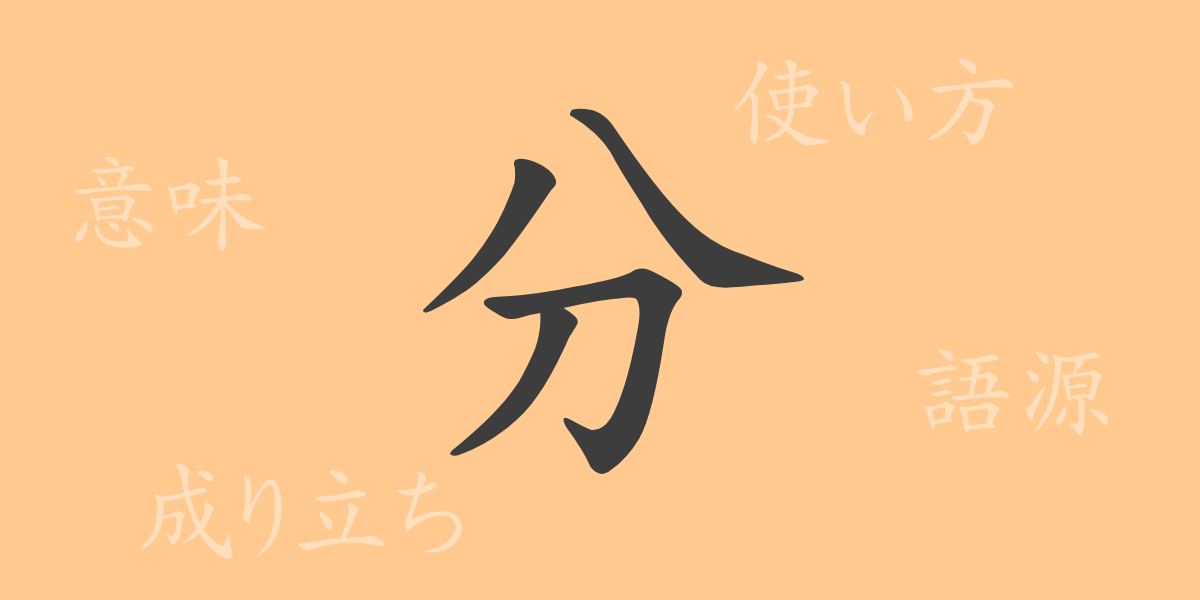One of the frequently used kanji (かんじ) in daily life is “分” (ぶん). This kanji (かんじ) holds multiple meanings through its shape and sound, playing a crucial role in the Japanese language. In this article, we will focus on the kanji (かんじ) “分” (ぶん), delving deeply into its origins and modern usage. By understanding the value of “分” (ぶん) in Japanese culture and language, you can gain a richer knowledge of the Japanese language.
Origins of “分” (ぶん)
The kanji (かんじ) “分” (ぶん) originates from ancient Chinese pictographs. Initially, it was shaped like a horizontal “八” (はち) to represent the meaning “to divide.” Over time, its shape evolved into its current form. This kanji (かんじ) symbolizes concepts such as dividing, distinguishing, and allocating, and is used to refer to actions like splitting and distributing.
Meanings and Usage of “分” (ぶん)
The kanji (かんじ) “分” (ぶん) has various meanings and uses. Primarily, it refers to actions or states such as “to divide,” “to understand,” “to allocate,” and “to distinguish.” It can also represent abstract concepts like time and degree. For example, expressions like “dividing time,” “easy to understand,” “assigning roles,” and “distinguishing between people” illustrate its usage.
Readings, Stroke Count, and Radical of “分” (ぶん)
The kanji (かんじ) “分” (ぶん) has multiple readings depending on the context.
- Readings: In on’yomi (おんよみ), it is read as “ブン” (ぶん) or “フン” (ふん). In kun’yomi (くんよみ), it is read as “わける” (わける), “わかる” (わかる), or “わかれる” (わかれる).
- Stroke count: It has a total of 7 strokes.
- Radical: The radical is “刀” (りっとう).
Idioms, Proverbs, and Phrases Using “分” (ぶん)
There are numerous idioms, proverbs, and phrases in Japanese that include “分” (ぶん). For example, “一分一秒” (いちぶいちびょう) means a situation where not even a moment can be wasted, “自分勝手” (じぶんかって) refers to self-centered behavior, and “我田引水” (がでんいんすい) means to act in a way that is convenient for oneself. These expressions are deeply rooted in Japanese thinking and behavior.
Summary of “分” (ぶん)
The kanji (かんじ) “分” (ぶん) has a richness of meaning and usage that belies its simple shape. This frequently used kanji (かんじ) in the Japanese language is indispensable for conveying nuanced meanings. For learners of Japanese, a correct understanding of this kanji (かんじ) is key to a deeper comprehension of more advanced language expressions. We hope that through this article, you have learned about the historical and cultural background of the kanji (かんじ) “分” (ぶん) and discovered further charm in the Japanese language.

























